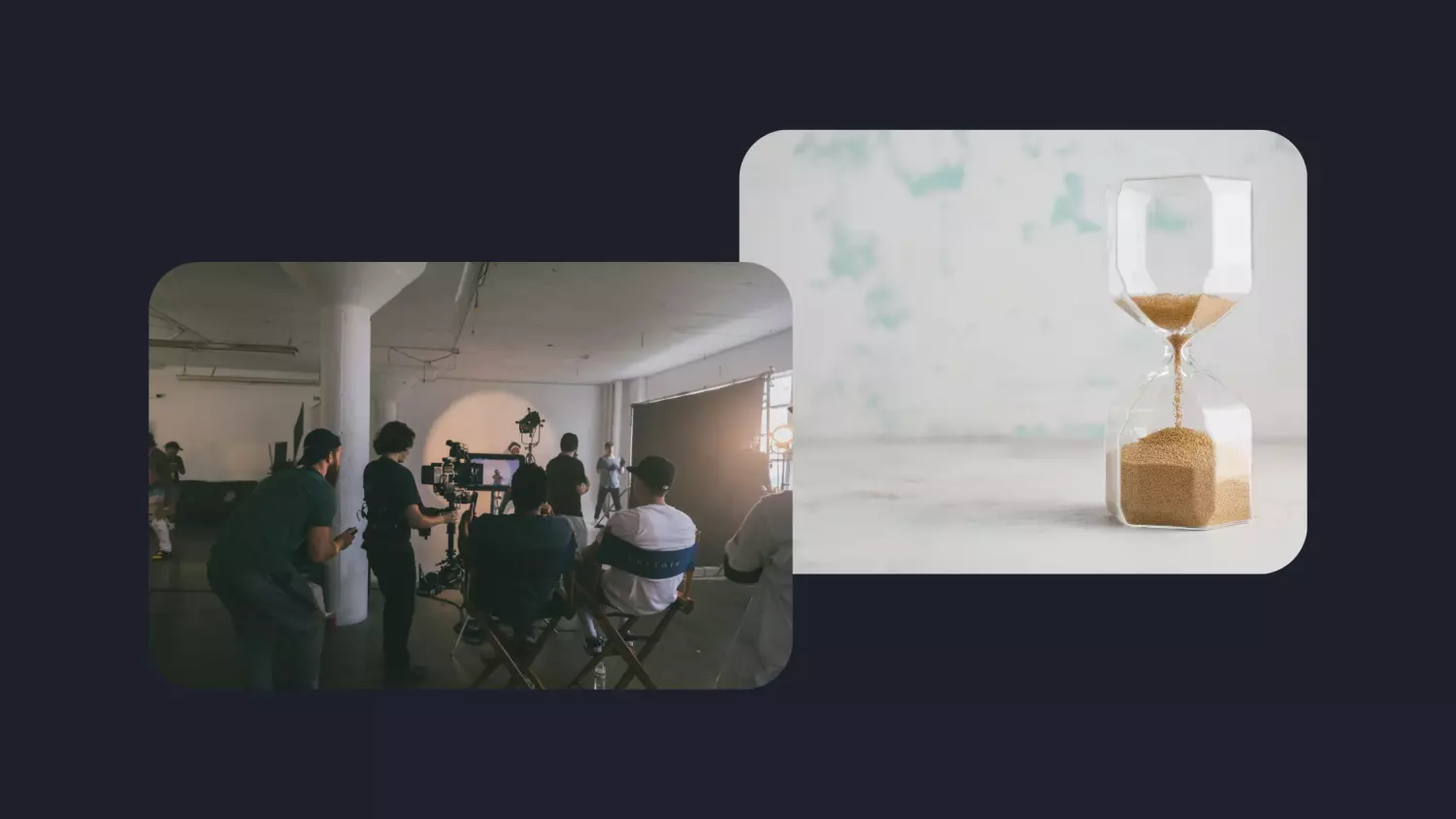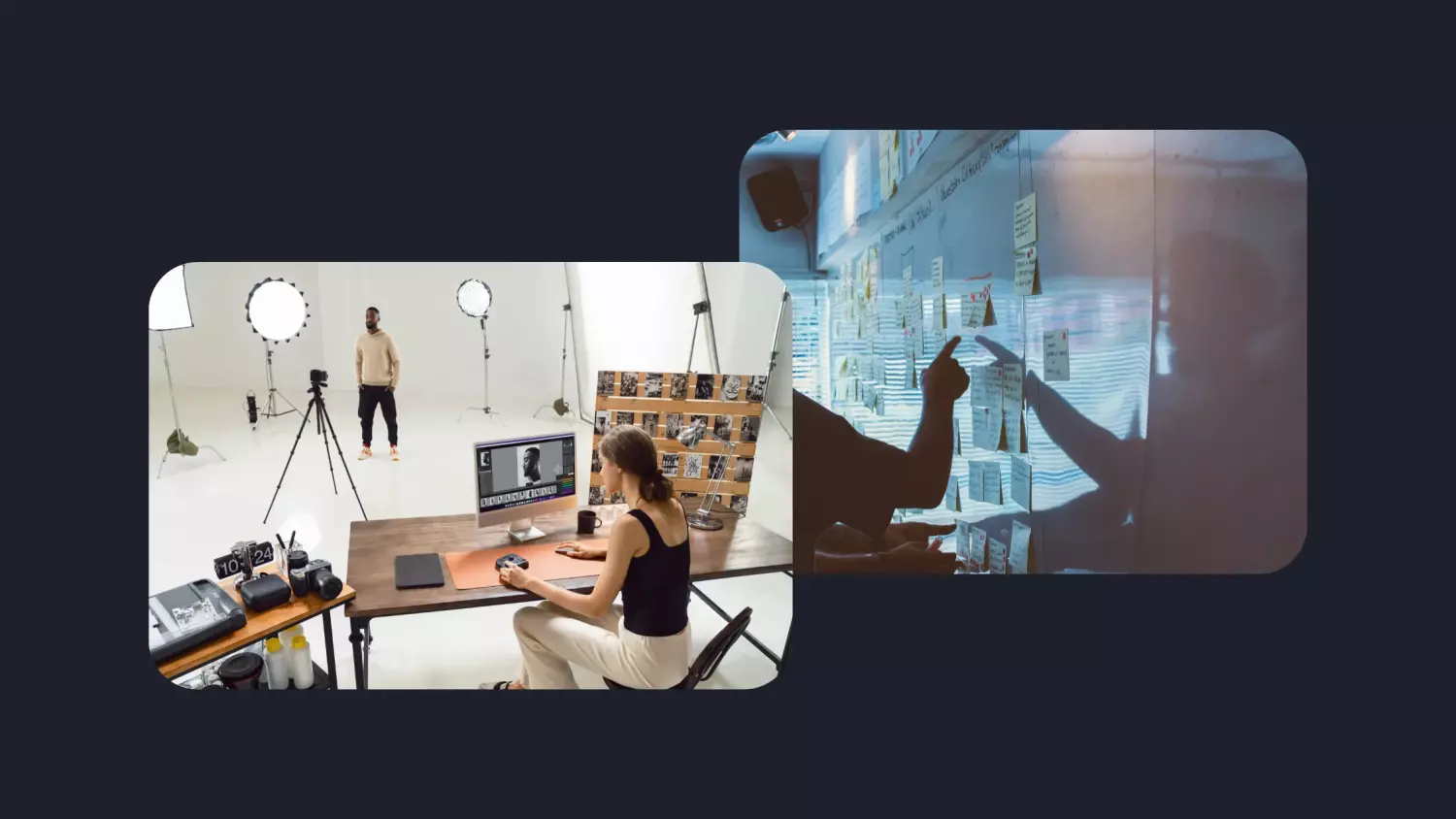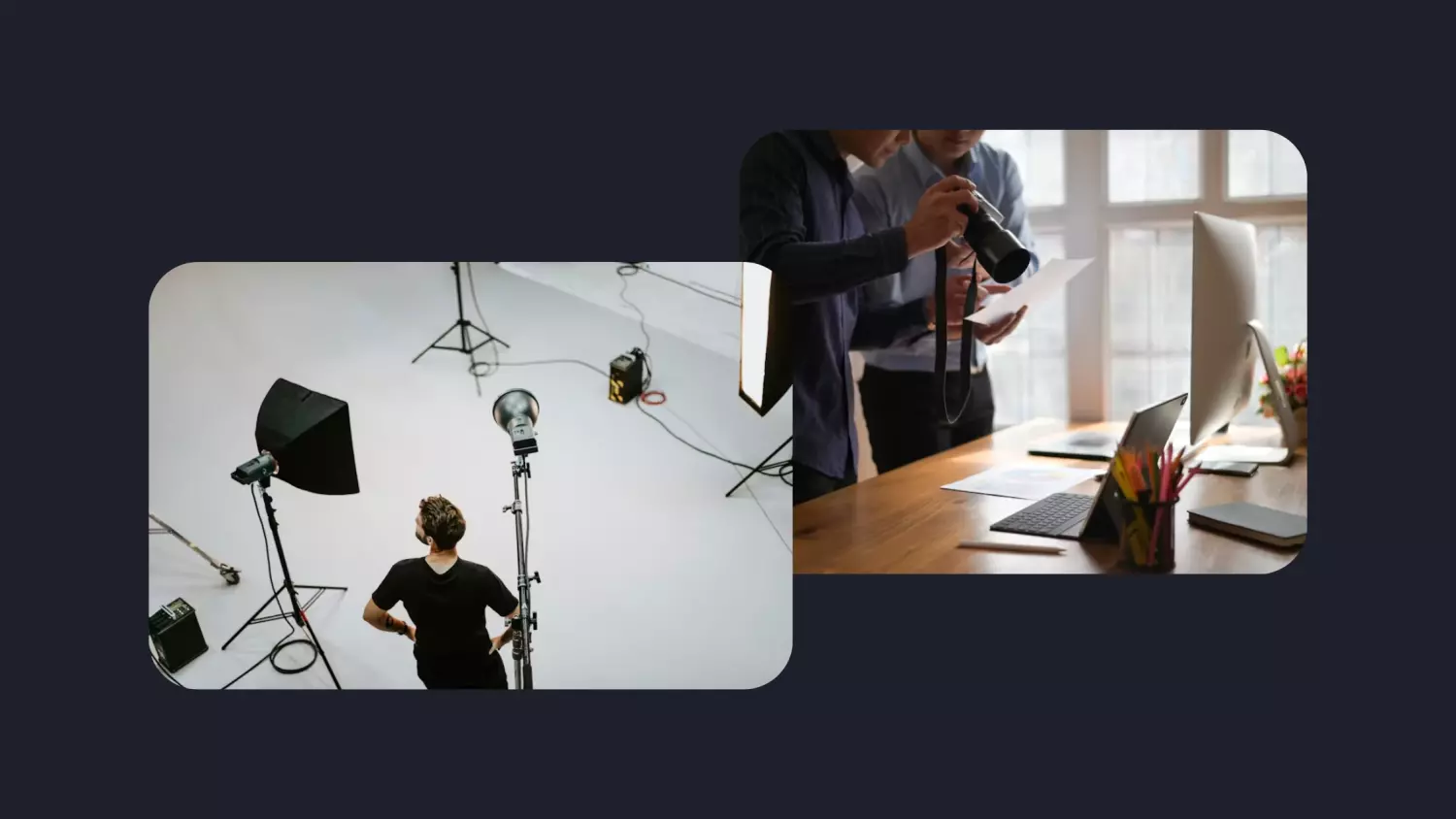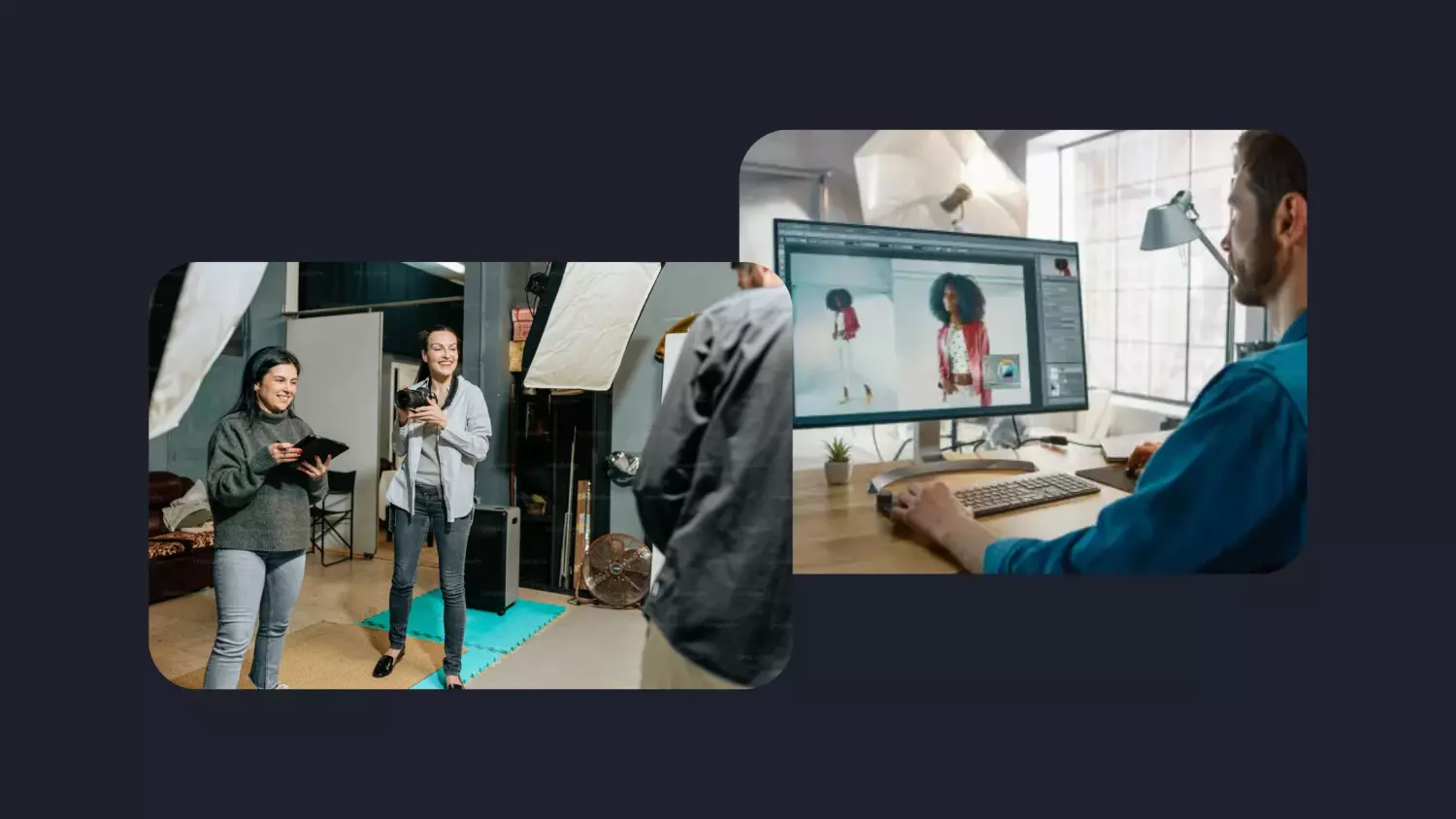For years, in-house creative studios have been seen as a necessary expense—essential for content production but always under budget pressure. That’s changing. Leading retailers now recognise their studios as revenue-driving assets, not just cost centres.
What’s behind the shift? A smarter, more strategic approach to content production. With the right technology and data, studios are working faster, cutting inefficiencies, and even generating new revenue streams. The result? More content, better ROI, and a direct impact on sales.
The evolution of in-house studios in retail
Not too long ago, most retailers outsourced their creative work—photo shoots, ad campaigns, product imagery. It made sense at the time. Agencies had the expertise, and managing an in-house team seemed like a hassle.
Then things shifted. Brands wanted more control over their content, faster turnarounds, and better alignment with their vision. Enter the rise of in-house studios. They started as a way to cut costs and keep brand identity consistent, but they quickly became much more than that.
Today, the best in-house teams are driving business strategy. They’re optimising workflows, creating revenue opportunities, and proving that a well-run studio isn’t just a support function—it’s a growth engine.
The hidden revenue potential of in-house studios
A well-run in-house studio does more than just churn out content—it directly impacts revenue. When creative teams work smarter, brands see faster product launches, better-performing content, and higher engagement. Here’s how:
- Faster time-to-market = faster revenue
When products go online faster, they start selling sooner. In-house teams can turn around shoots, edits, and approvals quickly—no waiting on external agencies. That speed translates to revenue hitting the books faster. - Optimised content performance
Great visuals aren’t just about aesthetics—they impact conversions. Studios using data to test and refine content (lighting, angles, backgrounds) see higher engagement and more sales. - Repurposing & monetising assets
Why shoot the same product five times for different channels? Smart studios create once and adapt, squeezing more value out of every asset. Some brands even rent out their studio services to external partners, turning production into a revenue stream. - Personalisation & localisation
Tailoring content for different regions and audiences is a sales driver. The ability to quickly create localised or personalised assets helps brands connect with customers in a way that generic, one-size-fits-all content just can’t.
In-house studios aren’t just cost centres anymore. When leveraged right, they’re a major revenue enabler.
How leading retailers are monetising their studios
In-house studios used to be all about cost savings, but some brands have flipped the script—they’re turning their creative operations into revenue-generating machines. Here’s how:
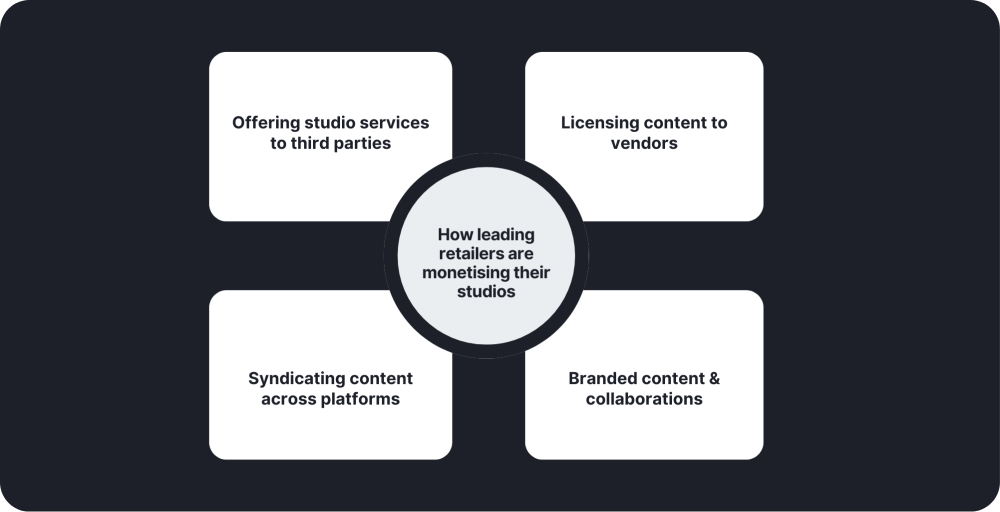
- Offering studio services to third parties
Some retailers are treating their studios like independent production agencies, offering photography, video, and content creation services to external brands. If you’ve already got the space, equipment, and talent, why not maximise its use? - Licensing content to vendors
Instead of letting suppliers handle their own (often inconsistent) product imagery, brands are producing high-quality assets in-house and selling them back to vendors. The result? Better content across sales channels and a new revenue stream. - Syndicating content across platforms
Brands with strong in-house studios are repurposing content for multiple platforms—retail sites, social media, in-store displays, and even paid partnerships. More mileage from every shoot means a higher return on investment. - Branded content & collaborations
Retailers with strong creative teams are leveraging their studios to produce campaign-level content not just for themselves, but for collaborations with influencers, designers, and partner brands—creating opportunities for co-branded sponsorships and paid partnerships.
Leading retailers are proving that an in-house creative team can be more than just an expense. When done right, it’s a business unit that pays for itself—and then some.
What is powering the shift
Retailers transforming their in-house studios into revenue-generating engines aren’t doing it with spreadsheets and email chains. The right technology makes all the difference. Here’s what’s driving the shift:
- Streamlined workflows & approvals
No more endless back-and-forths. Streamlined workflows expedite everything—from asset tracking to feedback loops—cutting down production time and reducing bottlenecks. - AI-powered content optimisation
AI is helping teams analyse what works. From selecting the best-performing product shots to automating metadata tagging, AI ensures content is data-driven, not just aesthetically pleasing. - DAM (Digital Asset Management) systems
Studios that produce thousands of assets can’t afford to waste time searching for files. DAM systems keep everything organised, making it easy to repurpose and monetise content across multiple channels. - Collaboration & production management tools
Cloud-based platforms keep photographers, editors, and marketing teams on the same page—literally. Real-time collaboration means fewer delays and faster turnaround times. - Data & analytics
Studios that track the right metrics can fine-tune their approach and create content that’s not just visually appealing but also conversion-driven.
Tech isn’t replacing creativity—it’s unlocking its full potential. The brands leading this shift are the ones using technology to work faster, smarter, and more profitably.
Actionable steps for retailers to transform their studios
Turning an in-house studio into a revenue-generating asset doesn’t happen by accident. It takes a clear strategy, the right tools, and cross-team alignment. Here’s how retailers can make the shift:
- Align studio goals with business objectives
A creative studio is a business driver. Set clear KPIs that tie studio performance to sales, conversion rates, and customer engagement. - Invest in technology to boost efficiency
Manual processes slow things down. Workflow solutions and streamlined processes help teams produce more content faster without burning resources. - Implement a performance-driven content strategy
Content should be created with intent. Use data to track what’s working, optimise production based on performance insights, and repurpose high-performing assets across multiple channels. - Foster collaboration across teams
Studios can’t work in a silo. Strong alignment between creative, marketing, and e-commerce teams ensures content is timely, relevant, and optimised for maximum impact. - Explore revenue-generating opportunities
High-quality content has value beyond just your brand. Consider licensing assets to vendors, offering studio services to third parties, or collaborating with partners to monetise content production.
Shifting from cost centre to revenue driver is about doing it smarter. The retailers leading this change are those treating their studios as a strategic part of the business, not just a production unit.
Conclusion
In-house studios are a critical part of a retailer’s growth strategy. When run efficiently, they accelerate sales, improve engagement, and even open up new revenue streams.
The key is to move away from a reactive, task-based approach to content production and treat the studio as a business function. Leading retailers are doing this by investing in technology, streamlining workflows, and finding creative ways to monetise their assets.
That’s exactly where Lets Flo comes in. Our platform helps retailers optimise their content production workflows, track assets efficiently, and unlock new opportunities for revenue generation—all while reducing costs and improving speed to market.
Learn more about Lets Flo and see how we can help.
Request a Demo
